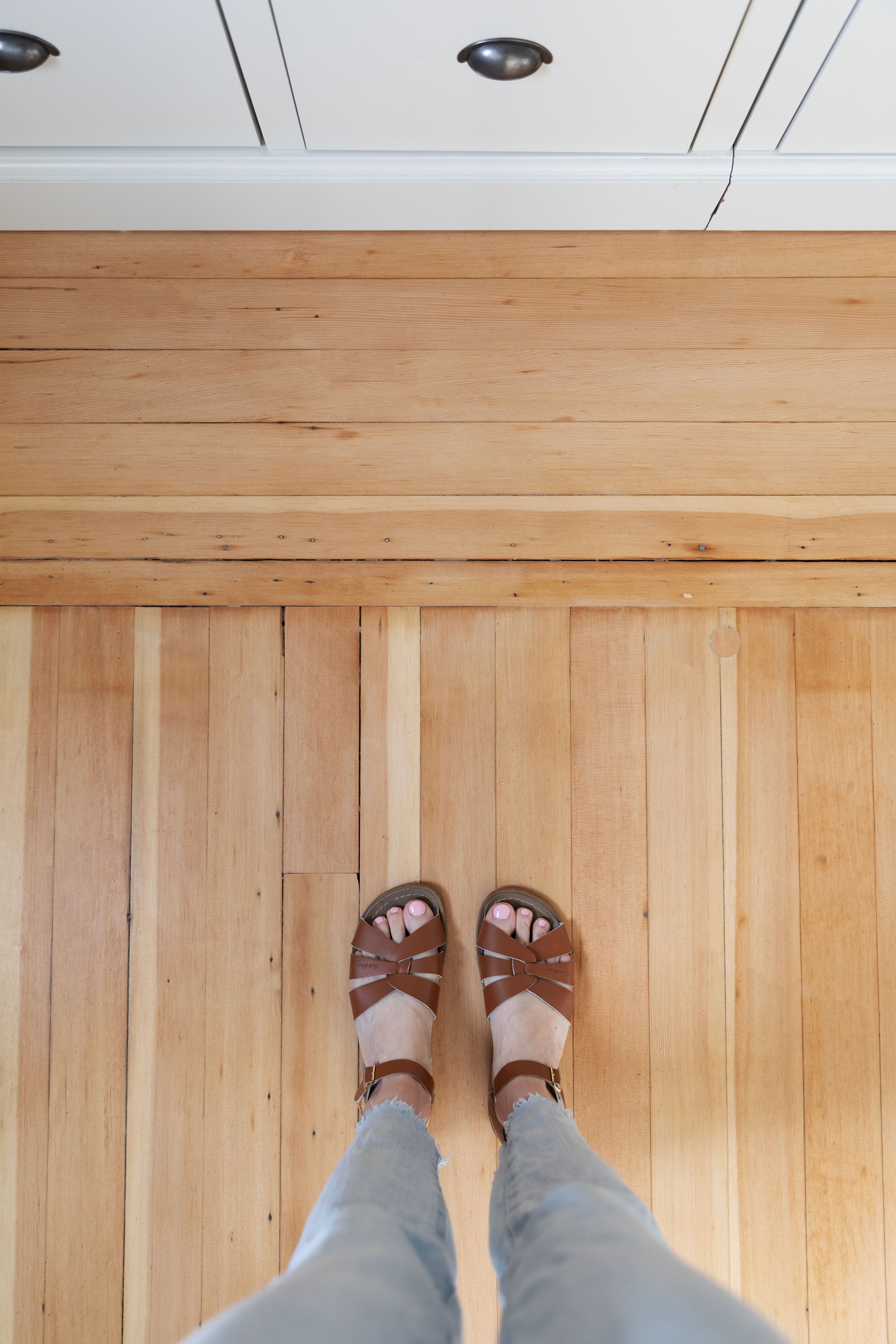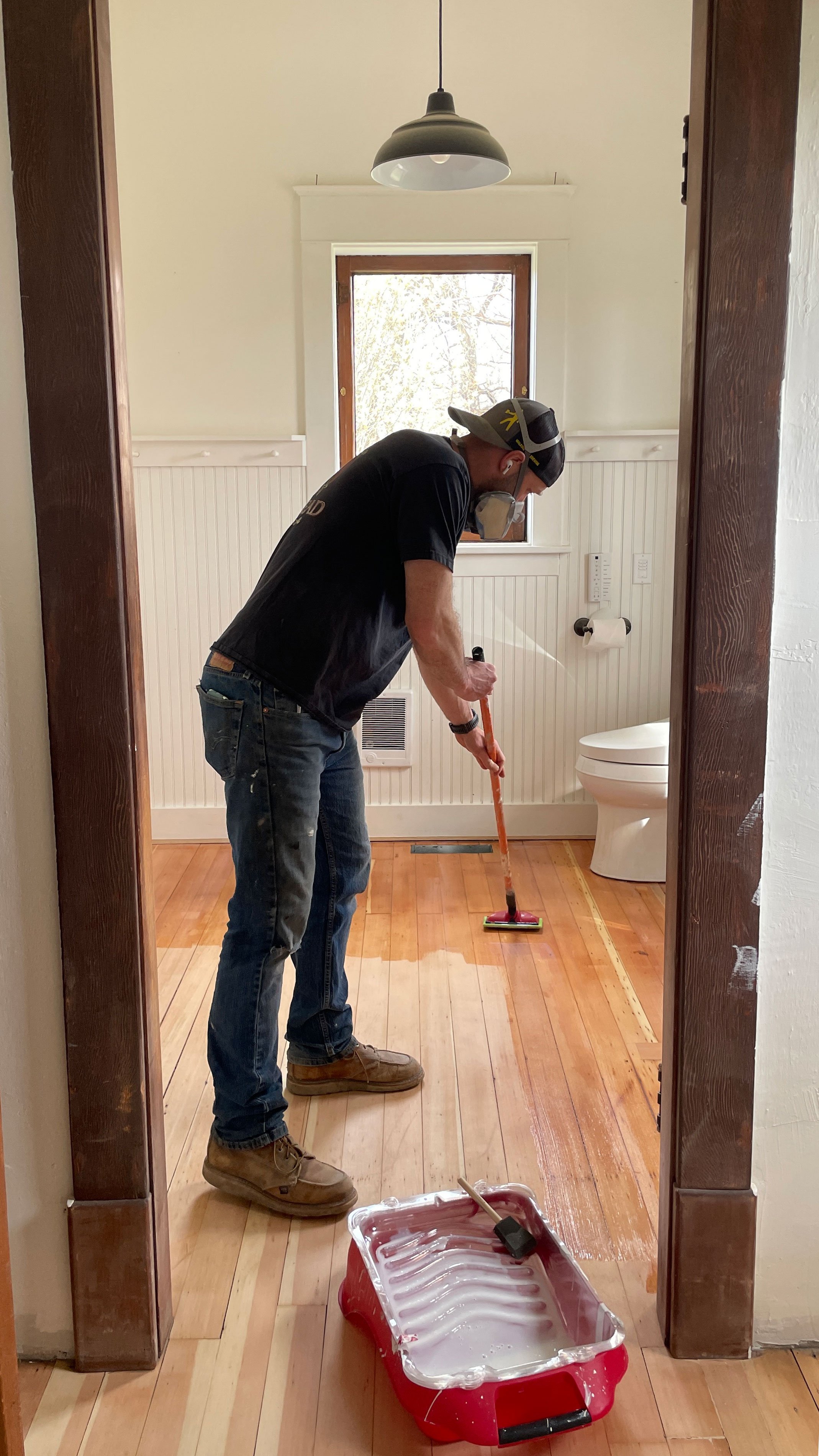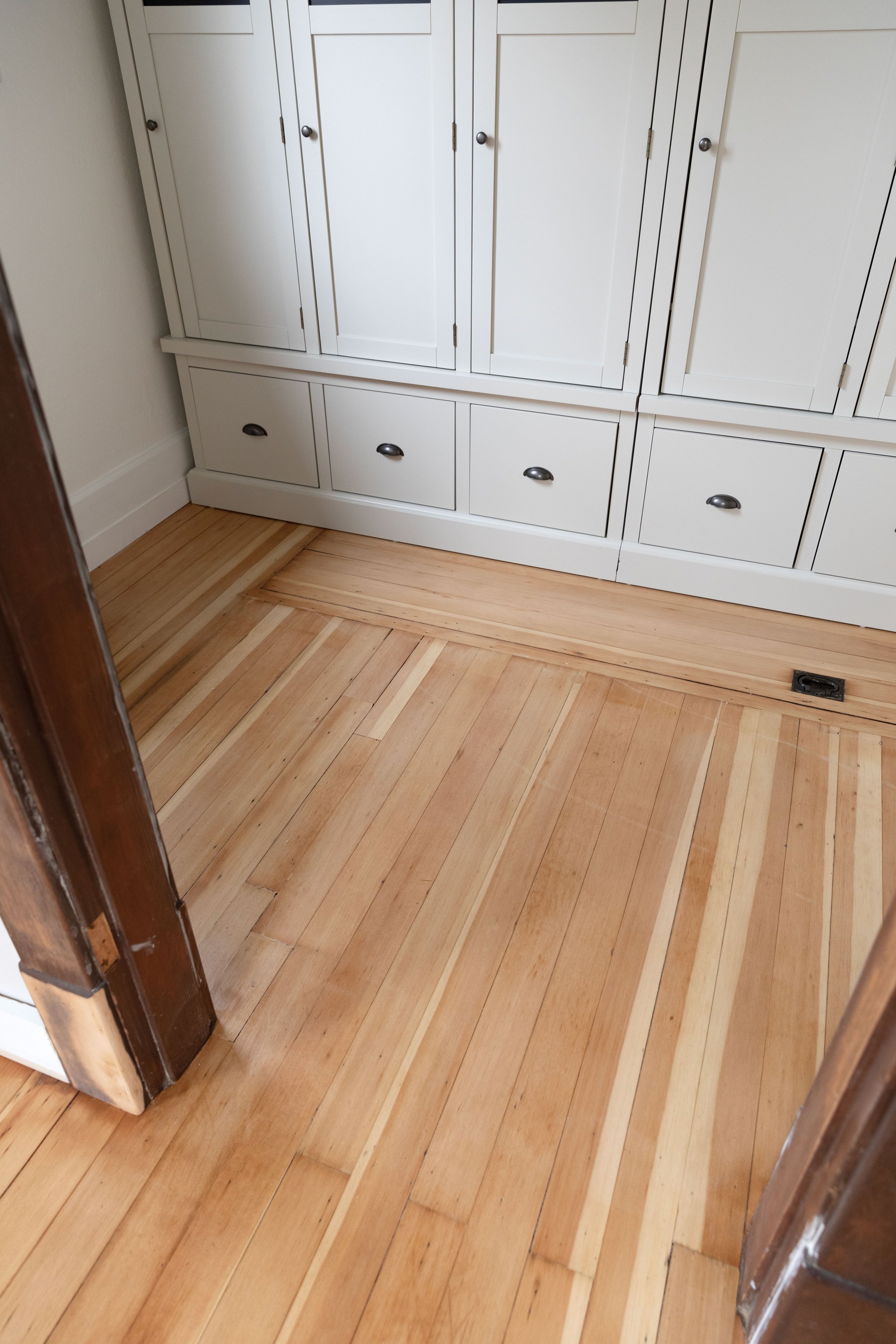Why We Opted to NOT Stain Our Fir Floors
THE FARMHOUSE
Staining hardwoods is a common part of the finishing/refinishing process. But when it came time to refinish the 111-year-old fir floors in our mudroom and main-floor bathroom, we opted not to. And today I wanted to share why and show you some pictures of these beautiful old floors….
As I mentioned, these are the original fir floors in our 1912 Farmhouse. Fir is a common wood here in Washington state and even though it’s technically a softwood, it works well for flooring and millwork.
A bit about the refinishing process
To refinish these floors, Garrett rented a drum sander from our local tool rental shop and carefully sanded off the top layer of finish and wood, about 1/8” using grits 36 and 80. He then cleaned the floors and filled holes/gaps with wood putty, and after that dried, gently sanded those spots. He then applied 3 coats of water-based polyurethane in satin (we used DEFT interior water-based polyurethane acrylic since it was available at our small town’s hardware store). Below are pictures of the drum sander mid-sand and the first coat of poly going on.
Before I show you more photos of the refinished floors, I have to tell you that we already scratched them. Ugh! We didn’t wait the entire ‘cure’ time listed on the back of the polyurathane can before sliding the lockers into place on a towel. And when we turned around we saw long scratches across the floor :( Totally our fault, but frustrating nonetheless. Thanksfully Garrett thinks he can fix them so I’m eagerly awaiting that…
Now let’s talk about why we opted not to stain these floors…
When we first moved into our Farmhouse almost 7 years ago I didn’t really care for the orange tone of the fir. At the time, grayed-out white oak was in vogue and our fir floors were far from that. But over the years, as we’ve lived in this house and slowly refinished the upstairs floors then the guest bedroom floors, and now mudroom floors, I’m so thankful we’ve left them natural. Here’s why…
natural Beauty
There’s beauty in natural elements. The color of fir may not be in vogue atm, but it’s still really beautiful, especially when it’s freshly sanded. It has a golden blonde tone that allows you to appreciate all of it’s intricacies : the mix of sap and heart wood, flat-sawn and vertical-grain, and the long, long pieces of flooring. You really can’t buy fir flooring like this anymore and leaving them al natural really lets you appreciate them.
Hiding dirt
Mid-tone floors seem to hide dirt better than really light or really dark floors. Anyone who’s had a white dog and walnut-stained floors knows how easily white shows on dark wood floors. Conversely, dark dirt shows really easily on lightly-stained floors. The sweet spot with hiding dirt is in the mid-range of wood tones - not too light, not too dark, and ideally with some variation - and these natural fir floors fit the bill.
Wear and Scratches (aka longevity)
When you have stained hardwood floors, wear and scratches often permeate past the stain to the original color of the wood. Meaning that scratches and wear-spots show up much more obviously and awkwardly on stained floors. We’re all about low-key finishes around here and love that natural floors hide wear and scratches better, extending the life of the finish.
Skill level
Adding stain to wood floors is a higher-level DIY project than refinishing alone. You have to make sure the stain coverage is even and blotchiness is minimized and that adds extra time and patience to an already laborious DIY project. I guess you could say that unless we were really wanting a certain color floor for the design of a space, stain is not worth the added hassle to us.
The old basement hatch is longer functional, but we decided to keep the sunken handle for a little bit of old-house nostalgic fun. It’ll eventually be covered by an area rug.
I’m really pleased with how these floors came out! What do you think?






















